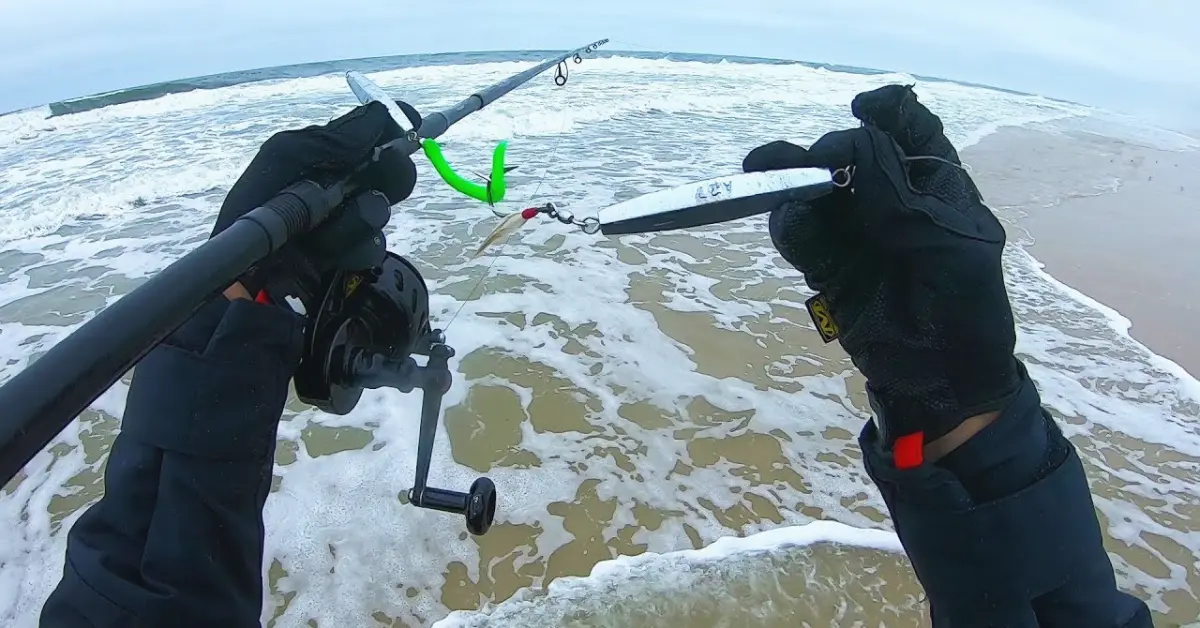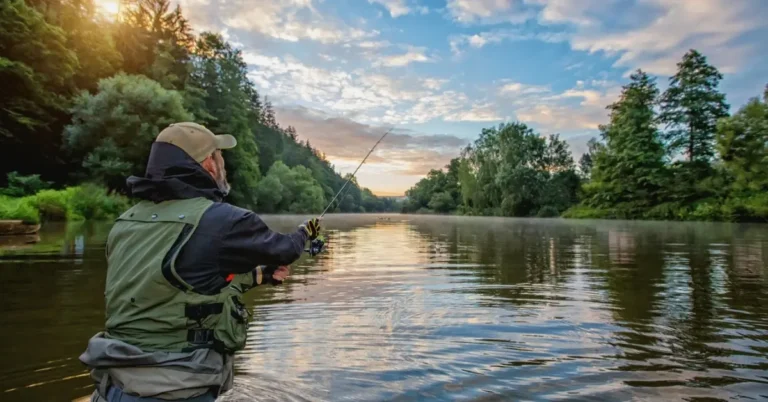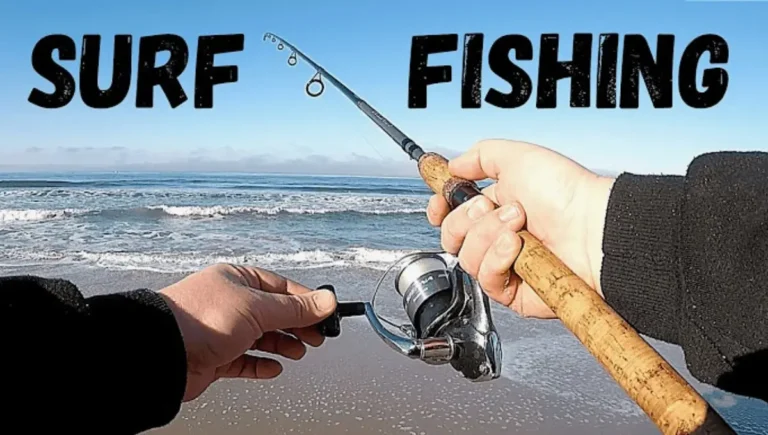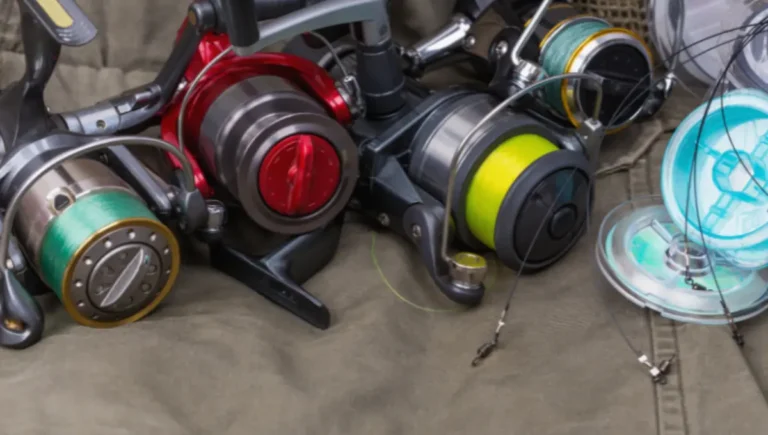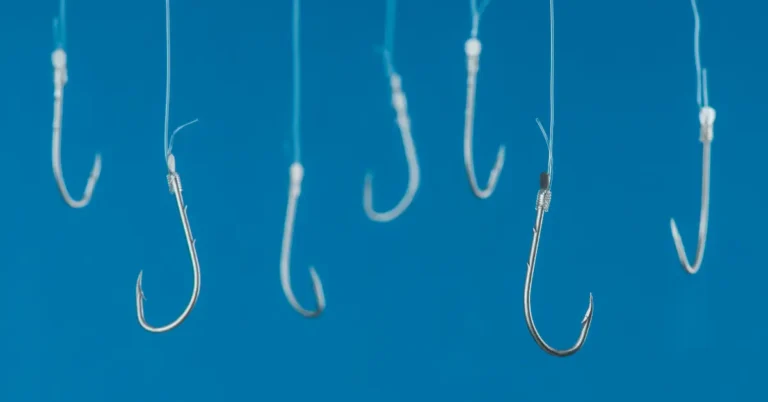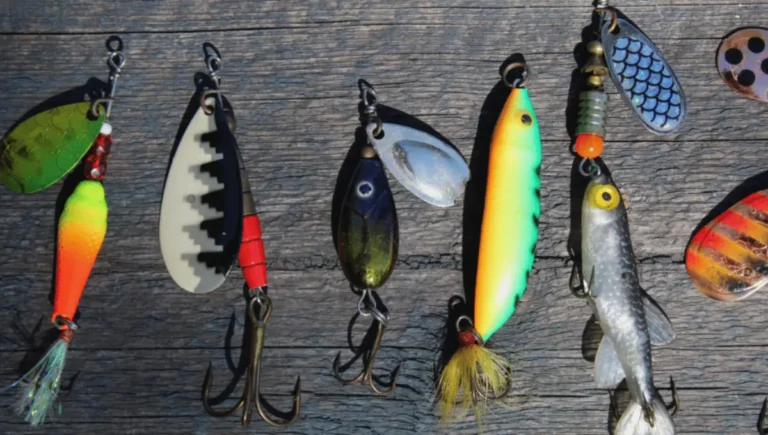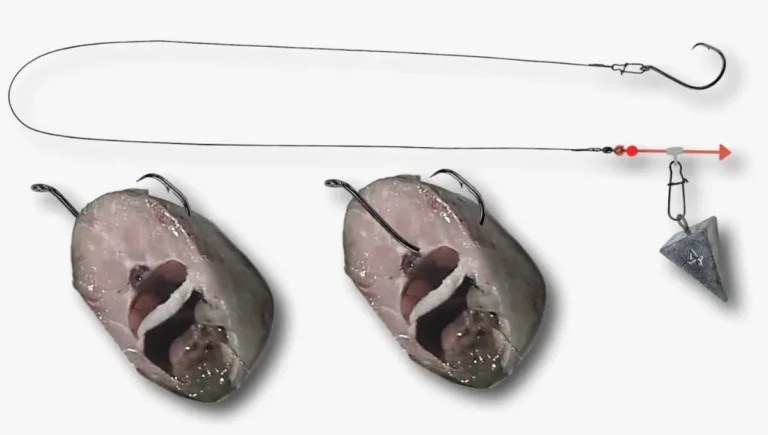How to Fish a Diamond Jig in the Surf
When employing the diamond jig fishing technique in the surf, the key is to cast the lure beyond the breaking waves, enticing predatory fish with the lifelike movements of a baitfish. The diamond jig, a versatile lure, effectively mimics the appearance and behavior of prey, making it particularly appealing to species like striped bass, bluefish, and bonito.
Initiate the process by casting the diamond jig beyond the turbulent waves. Once in the water, engage in a steady retrieve, employing a moderate to fast reeling speed. This motion imparts a realistic swimming action to the jig, closely resembling the natural movement of baitfish navigating through the water. Predatory fish are commonly found in the surf zone, actively searching for disoriented baitfish carried by the current.
Also Read: Surf Fishing Better at High or Low Tide
Surf Fishing Basics
Understand the Surf Fishing Environment
- Learn the dynamics of the surf fishing environment.
- Recognize the movement of waves and currents.
- Understand the behavior of fish in the surf.
Select Suitable Gear
- Choose the right rod, reel, and line for optimal casting distance and strength.
- Consider the conditions, such as wave size and target fish species, when selecting gear.
- Ensure your equipment is appropriate for the surf fishing environment.
Utilize Effective Lures
- Incorporate a diamond jig into your tackle for versatility and effectiveness.
- Understand the advantages of using a diamond jig for attracting various fish species.
Identify Fishing Spots
- Gain knowledge of where fish tend to gather in the surf, such as sandbars, sloughs, and troughs.
- Consider factors like tides and weather conditions when choosing your fishing spot.
- Increase your chances of success by targeting areas where fish are likely to be present.
Familiarize Yourself with Fish Behavior
- Learn about the feeding habits and patterns of the fish species you’re targeting.
- Adapt your fishing approach based on the time of day and prevailing conditions.
Choosing The Right Diamond Jig
When selecting the right diamond jig for your fishing venture, consider key factors to maximize effectiveness. Start by evaluating the size and weight of the jig, ensuring it aligns with the prevailing surf conditions. A heavier jig may be suitable for rougher waters, while a lighter one could excel in calmer conditions. Additionally, pay attention to the color of the diamond jig, as it can play a crucial role in attracting fish.
Bright colors often work well in clear water, while more subdued tones might be effective in murkier conditions. Experimenting with different sizes and colors allows you to adapt to the preferences of the targeted fish species. By carefully choosing the appropriate diamond jig based on these considerations, you enhance your chances of a successful and rewarding fishing experience in the surf.
Strategies for Using a Diamond Jig in Surf Fishing
To effectively fish a diamond jig in the surf, employ specific techniques tailored to attract diverse fish species. The key lies in varying the retrieval speed, enticing different types of fish to bite. Optimizing your chances of success involves adjusting the jig’s depth during surf fishing.
Utilize a jigging technique to impart lifelike movements, replicating the behavior of vulnerable prey. This motion proves enticing to fish, heightening their interest in your lure. Experiment with varying speeds and depths to identify the most effective approach under different surf conditions.
By honing these techniques, you elevate your ability to catch fish while employing a diamond jig in the surf.
Tying The Perfect Knot For Diamond Jig Fishing
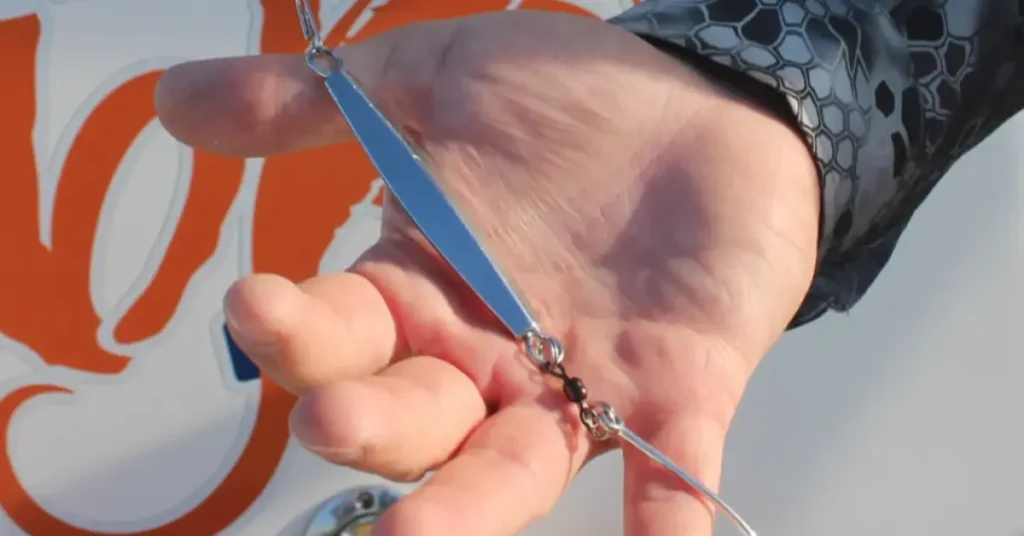
Achieving the perfect knot for diamond jig fishing is crucial for a secure attachment, and the improved clinch knot stands out as a reliable option. Follow this step-by-step guide to ensure optimal knot strength. Begin by threading the line through the eye of the diamond jig.
Create a loop and proceed to wrap the end of the line around the main line five to seven times. Thread the end through the previously formed loop. Moisten the knot and carefully tighten it. Assess the knot’s strength with a gentle tug; a robust knot will hold securely. With the right knot, you can approach surf fishing with a diamond jig confidently, significantly enhancing your chances of success.
Preparing Your Setup for Surf Fishing with a Diamond Jig
Successful surf fishing with a diamond jig hinges on a well-configured setup, combining the right rod and reel. Enhancing casting distance is achieved by incorporating additional weight into the line. To counteract irritating line twists, a high-quality swivel attachment is indispensable. The quest for the perfect rod and reel combination is paramount for a rewarding surf fishing experience.
Supplementing the line with weight facilitates extended casts, reaching greater distances offshore. A dependable swivel ensures the prevention of tangled and twisted lines, saving both time and frustration. Rigging up meticulously with the appropriate gear enables anglers to optimize their chances of enticing fish while employing a diamond jig in the surf.
Casting and Retrieving the Diamond Jig
Achieving success in surf fishing with a diamond jig involves mastering the overhead cast for optimal distance. The correct technique emphasizes the control of retrieve speed to attract nearby fish. Anglers enhance their effectiveness by discerning and interpreting various bites, allowing for tactical adjustments. Through consistent practice and gained experience, one can develop proficiency in both casting and retrieving the diamond jig effectively along the surf.
Precision and power characterize the overhead cast, providing the angler with broader coverage. The ability to regulate retrieve speed is pivotal, enticing fish to strike. Recognizing different bites, from subtle nibbles to more aggressive hits, empowers the angler to respond accordingly. Adopting these techniques elevates the likelihood of success when fishing a diamond jig in the surf.
Surf Fishing Tips For Targeting Specific Species
Surf fishing provides a range of techniques tailored to target specific species such as striped bass, bluefish, and fluke. When pursuing striped bass with a diamond jig, the strategy involves casting the jig and allowing it to sink to the bottom before employing a swift, upward motion during retrieval.
For bluefish, an effective approach is a rapid, erratic retrieve, imitating the prey’s movements. When targeting fluke and other flatfish species, a slower, dragging retrieve along the sandy bottom proves fruitful. Varying the speed and depth of your retrieves adds versatility and can attract different species.
Stay attuned to tidal movements and changes in the surf’s structure, as these factors significantly influence the fish’s location. Armed with these techniques, you’ll be well-prepared to employ a diamond jig in the surf and successfully target specific species.
Optimal Moments and Conditions for Surf Fishing with a Diamond Jig
Achieving success in surf fishing with a diamond jig hinges on grasping the ideal tide and current conditions. Weather patterns wield a pivotal influence on the outcomes of your fishing expedition. The time of day and seasonal variations also significantly dictate the opportune moments for deploying a diamond jig.
Discerning the prime fishing windows enhances the likelihood of a bountiful catch. Infusing variety into sentence beginnings captivates readers and sustains their interest throughout the article. So, prepare to cast your line, anticipate significant hauls, and reel in impressive catches while utilizing a diamond jig in the surf.
Surf Fishing Etiquette And Safety Measures
Surf fishing transcends mere catch-and-release; it’s also about mutual respect among anglers and harmonious coexistence in shared spaces. When venturing out, prioritize giving fellow anglers ample room, and refraining from encroaching on their fishing spots.
Responsibility is key when utilizing piers and jetties; adhere to established rules and regulations. Emphasize safety, ensuring the use of a robust rod and suitable footwear to prevent accidents.
Maintain constant awareness of your surroundings, staying vigilant for large waves or sudden weather shifts. Adhering to these etiquette and safety protocols guarantees a pleasant and incident-free surf fishing experience.
What is the best bait for surf fishing?
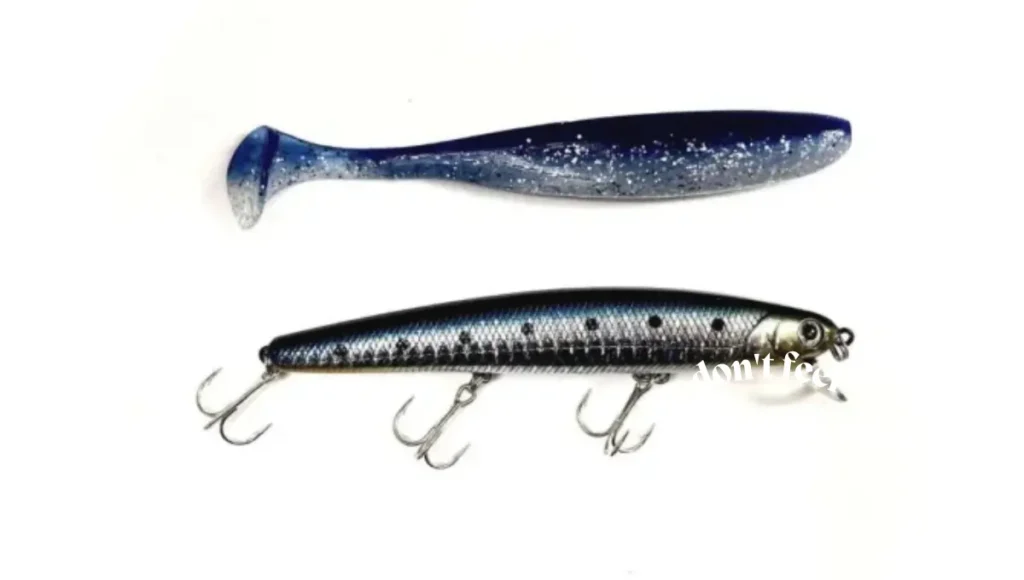
When it comes to surf fishing, the best bait depends on what fish are running close to shore at the time. Some universal options that work great for a variety of species include bloodworms and razor clams. Bloodworms are small red worms that can be found in saltwater marsh areas. Fish like striped bass, bluefish, and flounder have a very hard time resisting the scent of bloodworms on the hook.
Razor clams are also wonderfully smelly and fish find their scent very enticing. Chopping up a fresh razor clam and using the pieces as bait is almost guaranteed to get a strike. Other good bait choices include pieces of shrimp, sand fleas, or mole crabs skittering along the wet sand, finger mullet, and menhaden or silversides used as fresh dead bait.
The key is choosing something that mimics the local forage species and has a strong odor that carries through the surf to attract hungry fish cruising the shoreline. With the right bait selection, surf anglers can enjoy many exciting fights from a variety of in-shore gamefish.
How do you rig a jig?
To properly rig a jig, you’ll need the jig head and the desired soft plastic lure or twister tail. Most jig heads come with a wire hook, so the first step is to insert the hook through the plastic lure, coming out about an eighth to a quarter inch from the nose of the bait.
Then gently pull the hook through the tail of the lure so the point sticks out the other side. This allows the lure to have action and wiggle freely as you fish. Next, use your fingers to position the plastic on the head so it balances correctly. Give it a pull to make sure it is securely fastened but still has room to move. Your jig is now rigged and ready to be cast.
Fun And Food: Cooking Your Surf-Caught Fish
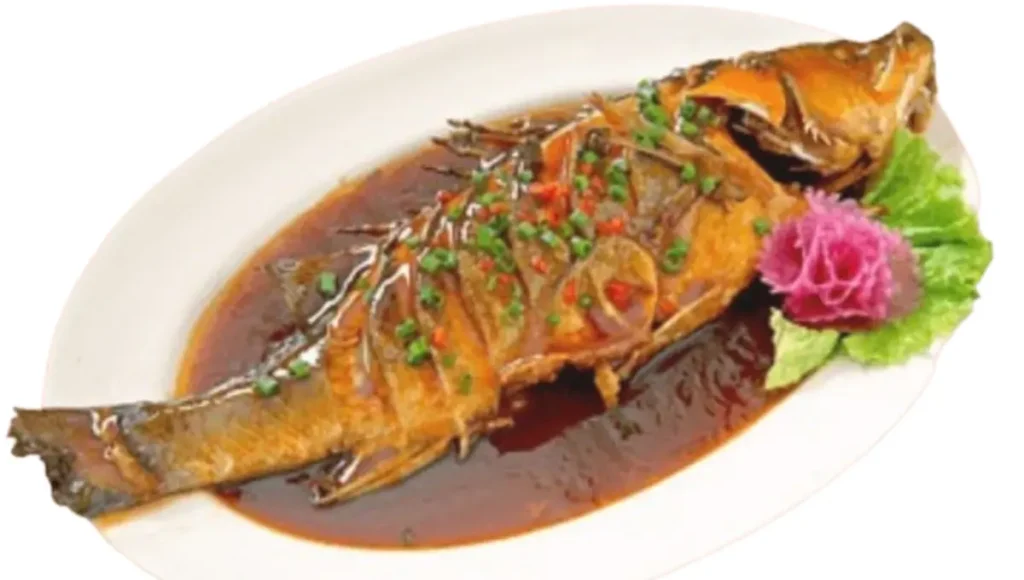
Fishing with a diamond jig in the surf offers both excitement and rewarding results. After a successful day of reeling in your catch, why not turn it into a delectable meal? Cooking your freshly caught surf fish can be a delightful experience.
Numerous quick and easy recipes are available to help you savor the best flavors from your fresh catch. Before diving into the culinary adventure, ensure proper cleaning and filleting of the fish for the highest meat quality.
Once everything is ready, consider hosting a beachside fish fry, inviting friends and family to share in the joy of your catch and creating lasting memories together. So, the next time you venture out for surf fishing, explore new recipes and relish the delightful combination of fun and food.
Frequently Asked Questions
Conclusion
To excel at surf fishing with a diamond jig, grasp the right techniques. Follow this guide for a higher chance of success on your next trip. Experiment with various retrieval speeds and depths to adapt to current conditions.
Use quality gear and maintain a strong grip for a successful hookset. Surf fishing with a diamond jig is both thrilling and rewarding. With practice, you can master the art of luring in trophy fish. Give it a shot and you might uncover a new favorite technique! Happy Fishing!
